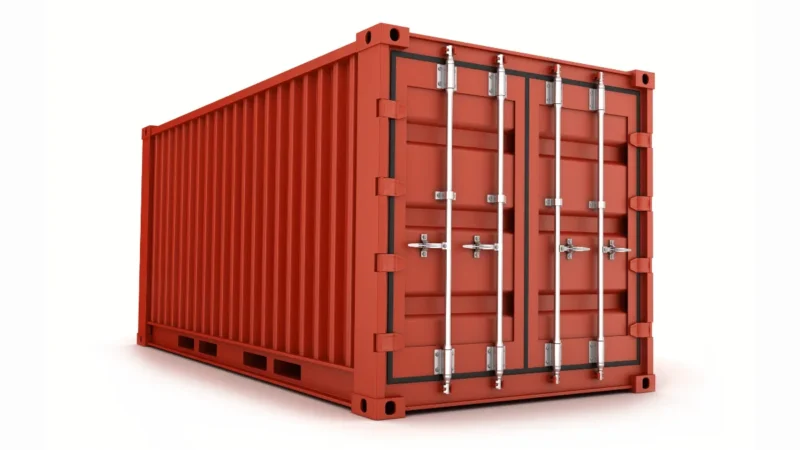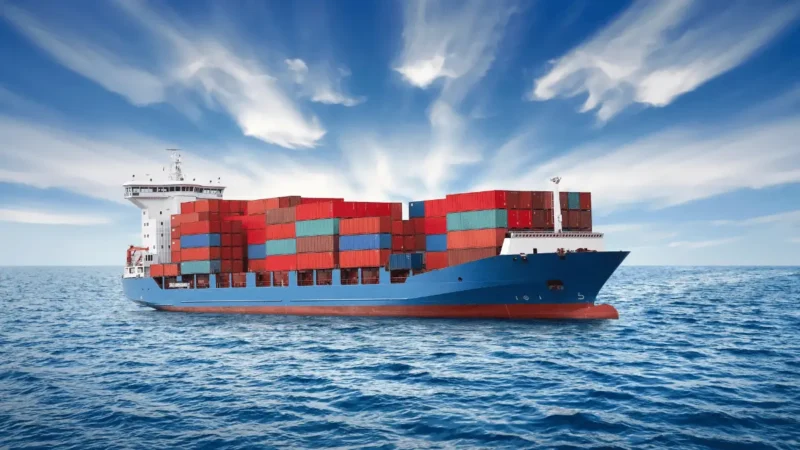Securing shipping containers is essential to ensure the safety and stability of ships that transport large quantities of goods worldwide. Since these containers can weigh several tons, it’s crucial to anchor them properly to prevent any movement during transport.
In this article, we will focus on the different methods of securing shipping containers and the procedures required.
Procedure for Securing Shipping Containers
When buying shipping containers, one of the most important aspects to consider is their safety and quality to ensure they perform well. This also depends on the securing processes, which must be carried out with great care and precision. Therefore, trained and experienced operators are required to perform them.
Before transport begins, the containers must be inspected to ensure they are in good condition and correctly labeled.
Once the containers are ready to be transported, they are placed on the deck and secured with appropriate locking and lashing devices. If necessary, the containers can also be secured with lashing nets or straps.
During transport, operators in charge of securing the cargo perform regular inspections to confirm that the containers remain in place and that there are no problems with the locking and lashing devices.
Types of Shipping Container Securing
Pivot Pin Securing
This is the most recommended method for ships that have a reinforced hull structure. The securing mechanism consists of a pin that is inserted into a hole in the port’s ground. A retaining plate inside the ship’s hull then fixes the pin in place.
The pivot pin securing mechanism is suitable for strong wind and tide conditions, as it provides secure fixing to the ship’s hull.
Rock and Roll Securing
This type of securing is most suitable for smaller and less reinforced ships. The mechanism consists of an iron ball that is attached to one end of a chain and thrown to the port’s bottom.
Then, the chain is attached to the ship and pulled back to secure the anchor. The rock and roll securing mechanism is a V-shaped device attached to the top of the anchor chain and secured to the ship.
The rock and roll securing mechanism allows the anchor chain to adjust to different angles and maintains tension in the chain, which helps to keep the anchor fixed in place.
Claw Securing
This is the most commonly used securing method on large ships. The claw is an iron claw-shaped device that hooks onto the port’s bottom and is secured to the ship by a chain.
The claw has two or more arms that extend outward from a central head. Each arm has a sharpened end that is buried in the port’s ground to provide secure fixation.
The claw securing method is very robust and is commonly used in cargo ships and other large vessels. It’s recommended for strong tide and wind conditions since it provides secure and stable fixation.

Innovations in Shipping Container Securing Technology
In recent years, several innovations in shipping container securing technology have exponentially improved the safety and efficiency of maritime transport. Some of the most interesting ones are:
Container Monitoring Systems
These systems use sensor technology to monitor the position and status of containers during transport. This allows for greater accuracy in problem detection and a faster response to emergency situations.
Improved Locking and Lashing Devices
Locking and lashing devices are constantly being improved to provide greater safety and reliability during transport. Some devices rely on electronic locking technology to provide a more secure and user-friendly lock.
Improved Shipping Container Design
Modern shipping containers are made of much lighter and stronger materials to reduce weight and increase loading capacity. At the same time, more aerodynamic container shapes are also being developed to reduce wind resistance and increase the energy efficiency of shipping.
Benefits of Proper Securing of Shipping Containers
Proper securing of shipping containers is essential to ensure the safety of the crew, the vessel, and the cargo. The main benefits of proper securing are:
- Reduced risk of accidents: Proper securing of shipping containers reduces the risk of them shifting during transport, which can lead to accidents and damage to the cargo and vessel.
- Protection of cargo: Proper securing ensures that the cargo stays in place during transport, reducing the risk of damage and loss.
- Efficiency in transport: Perfect securing allows vessels to transport more cargo safely and efficiently, increasing the profitability of maritime transportation.
In conclusion, the securing of shipping containers is a critical process in the maritime transportation industry that guarantees the safety of the crew, the vessel, and the cargo.





